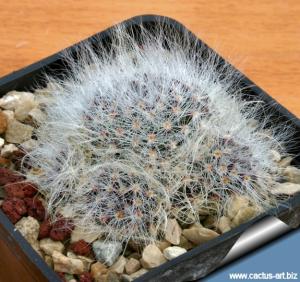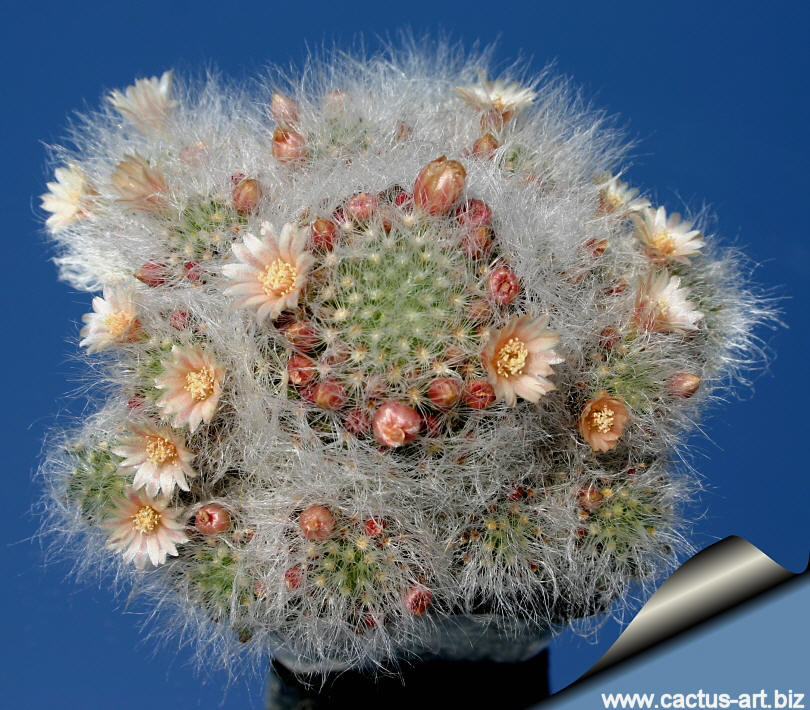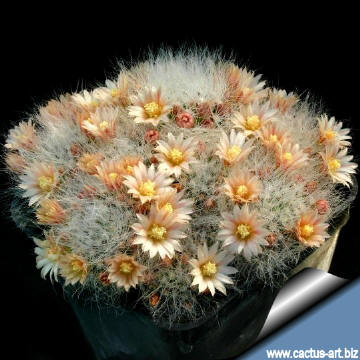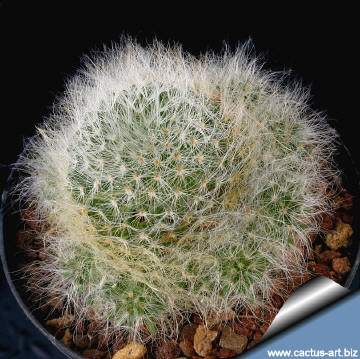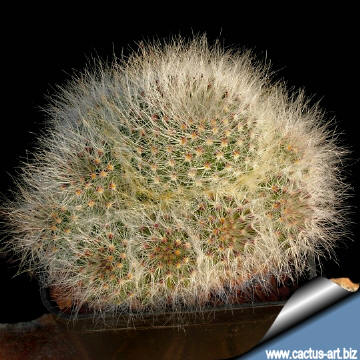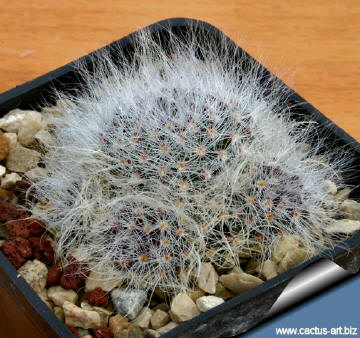-
x
Description
|
The whole habitat of this plant (discovered only in 1997) disappeared under the water of a man-made dam. It is extinct in nature. The stem covered by numerous hairlike radial spines, giving the plant a shaggy appearance. Family: Cactaceae (Cactus Family)
|
|
|
Morphology (Identifying Characteristics): It is a small plant that forms irregular clumps. Taxonomy: This plant is a member of the Mammillaria crinita complex (StylotheleSeries). Only some authors consider M. sheinvariana to be a good species; the others classify it as M. crinita (e.g. Fritz Maurice accepts the individuality of the new plant but considers it a subspecies of M. crinita.) |
|
|
Photo of conspecific taxa, varieties, forms and cultivarsCultivation: It has a thick root and is susceptible to over-watering. Sometimes it is grafted to avoid root rot problems. It likes warmth (recommended minimum winter temperature 5° C), but if kept perfectly dry it can easily survive at winter night temperatures below 0° C (in our greenhouse no damage at -10° C for a few hours in the winter of 2002-2003). Suited for sunny-bright exposure; it can tolerate light shade, likes airy exposures. It needs a deep pot and good drainage to accommodate its tuberous root system. Keep dry in winter. |
|

